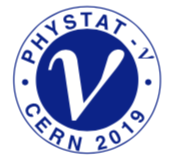Speaker
Description
The look-elsewhere effect is a familiar issue to collider experiments, and occurs, for example, when a search is performed for a new resonance that is not predicted under the null hypothesis. Many searches for sterile neutrinos employ a similar strategy: looking for evidence of oscillation between two active flavours at an unknown mass-squared splitting. As with collider searches, this results in a family of alternatives, which must be taken into account to correctly calculating the significance of any apparent signal. Although this issue appears to be recognised among collaborations, there is no common "rule of thumb" for how to treat it, as oscillation signatures are not localised to any particular region of the data. Here we investigate an approach, originally proposed by Davies and subsequently refined by Gross and Vitells, that has been recently adopted in collider searches but does not yet appear to have been tried in neutrino oscillations searches.
